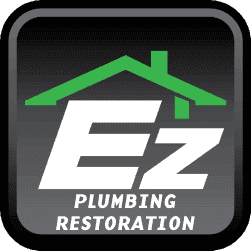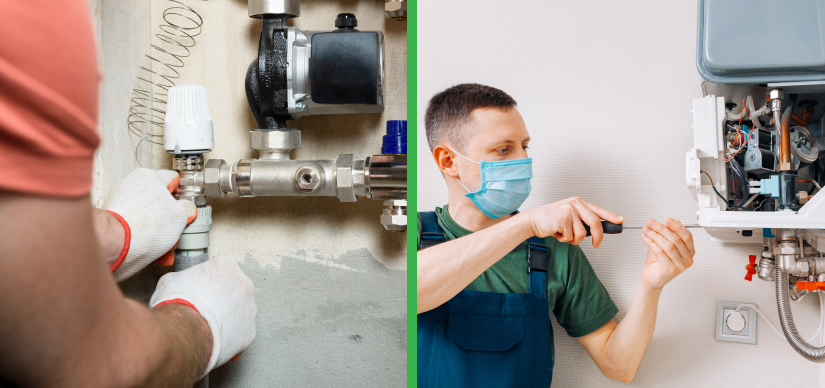Common Repairs for Hot Water Heaters and How to Address Them
Common Repairs for Hot Water Heaters and How to Address Them
Regular use of hot water heaters makes them susceptible to issues and malfunctions. These issues may be small, yet they disrupt their functionality. Some of these issues include sediment buildup, corrosion, faulty thermostats, and pressure valve issues, for which you can use simple DIY and prevention methods to deal with them. Some issues may be as complex as leaks, strange noises, and fluctuating water temperatures, which need professional assistance. This blog explains common hot water heater repairs and how to address them. Read further to know how to best deal with the problems, one-by-one.
Here are the top 6 common problems and their causes relevant to hot water heaters:
1. No Hot Water: Pilot light resetting.
2. Not Enough Hot Water: Thermostat Adjustment
3. Leaking Water Heater: DIY tightening screws or Patch kit
4. Sediment buildup: Tank Flush
5. Pressure Relief Valve Problems: Replacement of valve
6. Fluctuations in temperatures or reading: Thermostat Cleaning or Replacement
Besides DIY, a homeowner should be aware of the best water heater service in San Diego to address emergency issues.
6 Common Hot Water Heater Repairs-
1. Checking Pilot Light for No Hot Water
Several issues could be causing the water heater not to produce hot water. Start by checking if the pilot light is working. If it is flickering or not working, then follow the guidelines of the manufacturer’s manual-
- Turn off the gas valve and wait a few minutes before beginning the reset.
- Switch to “pilot” mode and simultaneously ignite the pilot by pressing the reset button using a long lighter.
- Hold for a minute. If it stays lit, turn to “on.”
If the pilot continues to go out, it may indicate a deeper issue, and contact professional assistance for the water heater in San Diego.
2. Thermostat adjustment for Insufficient hot water
Insufficient hot water is frustrating, especially during winter. Many factors contribute to it, such as differences in thermostat settings, excess sediment buildup, faulty heating elements, and poor insulation.
Here is how to address this issue
- Start with checking the thermostat and adjust it to the desired typical temperature. The ideal temperature would be 120 degrees Fahrenheit.
- If the problem continues, it indicates there is a fault in the thermostat. In such cases, replacement becomes necessary.
Removal of accumulated debris by flushing will help remove sediment buildup and get heating efficiency back to normal. Regular checking for leaks helps address the issues in time and prevent such issues from amplifying.
3. Repairing Steps for Leaky Heater
A situation like a leaky water heater needs immediate attention so that energy wastage and further damage do not occur. Follow the given steps for hot water heater repairs in case of a leakage problem:
- Turn off the main power supply or gas (in the case of a gas water heater)
- Inspect the leak by starting to identify its source. It could be due to a leaking valve, loose connections, or a crack in the tank. So, tighten the loose fittings and, if required, replace faulty valves.
- In case of a leak from the tank, use a patch kit for a temporary solution. This works well for conventional water heaters.
However, in the case of tankless water heaters, search for “install and repair tankless water heaters near you” to get the best solution for a durable fix.
Prompt identification and fixing will help prevent water damage and maintain heater efficiency.
While being proactive is key to a long life, hiring a qualified professional for water heater installation and repair services in San Diego is also crucial to ensure safety.
4. Tank Flush for sediment buildup
Sediment buildup in the heater tank at the bottom remains the important cause of strange noises. Over a period, minerals present in the water can settle and solidify, forming a sediment layer. As the water heater warms up, sediment accumulation can lead to audible popping or rumbling sounds. To remedy this, you can perform a tank flush to eliminate the sediment and restore optimal functionality.
- Begin by switching off the power supply to the water heater.
- Attach the water hose to the drain valve of the tank and commence the drainage process.
- Direct the hose to a drain.
- Open the drain valve and allow the water to flow freely for a few minutes until it becomes clear.
If the issue persists after this DIY, call for professional assistance. Take the help of a qualified plumber or technician specializing in water heater repair in San Diego to get a thorough inspection done. Getting to the underlying reasons is better than finding the required repairs to ensure your water heater operates efficiently and quietly.
5. Pressure Relief Valve Problems: Replacement
Water leaking from the valve or excessive pressure buildup in a hot water heater causes pressure relief valve problems. Over time, valves wear out if you notice show signs of wear. Regular inspection and cleaning of valves is essential to prevent buildup of sediments or minerals.
Here is how to address this issue:
- If there is leakage, it is always better to replace the valve as safety is concerned.
- Start by turning off the power of electric water heaters. In the case of gas water heaters, turn off the gas supply.
- Turn on a hot water tap to release pressure in the tank. If the leakage still continues, follow the replacement steps.
- Open a hot water faucet and drain a few gallons into a bucket to relieve pressure.
- PRV is situated at the top or the side of the water heater tank. It has a descending pipe that dives to the bottom of the tank.
- Using a wrench, detach the pipe attached to the PRV.
- Now, using a pipe wrench, unscrew the old PRV from the heater.
- Use Teflon tape as a shield by draping it around the threads of the valve. Carefully create a tight seal.
- Gently screw the new PRV into the opening of the water heater. Use a pipe wrench for tightening.
- Attach the pipe to this new PRV using an adjustable wrench.
- Open the cold water supply to refill the tank.
- Check for any leaks around the new PRV.
6. Thermostat Cleaning for Temperature fluctuations
Problems with thermostats cause discomfort and interrupt the operational efficiency of your household. Inefficiency of the water heater, erratic fluctuations, or scalding temperatures could be the direct consequences. The thermostat’s ability to maintain the required heating level could also be affected by sediment buildup.
A commonly seen problem with thermostats is faulty sensors, which cause different temperature readings.
The simple repair for such issues is to clean the thermostat sensor or replace it if absolutely necessary. Thus, regular self-checkups or getting professional help for water heater repair in San Diego are vital for preventing malfunctions of the components.
Staying informed and following the necessary proactive measures will help maintain the optimal performance of the water heater.
Conclusion
Water heater is a regularly used device in every household. As we rely on it almost daily, it is important to know the common problems and repairs related to it. Every now and then, problems such as not enough or no hot water, leakage, sediment buildup, and thermostat-related issues keep arising. Many hot water heater repairs are simple to solve by yourself, especially when detected early. So, the smart way would be to stay alert and know the signs of these problems to identify and work on them early. Most of the time, staying proactive prevents disruptions in the hot water supply and ensures the appliance’s reliable operation. Otherwise, stay in contact with the local water heater repair service in San Diego.


